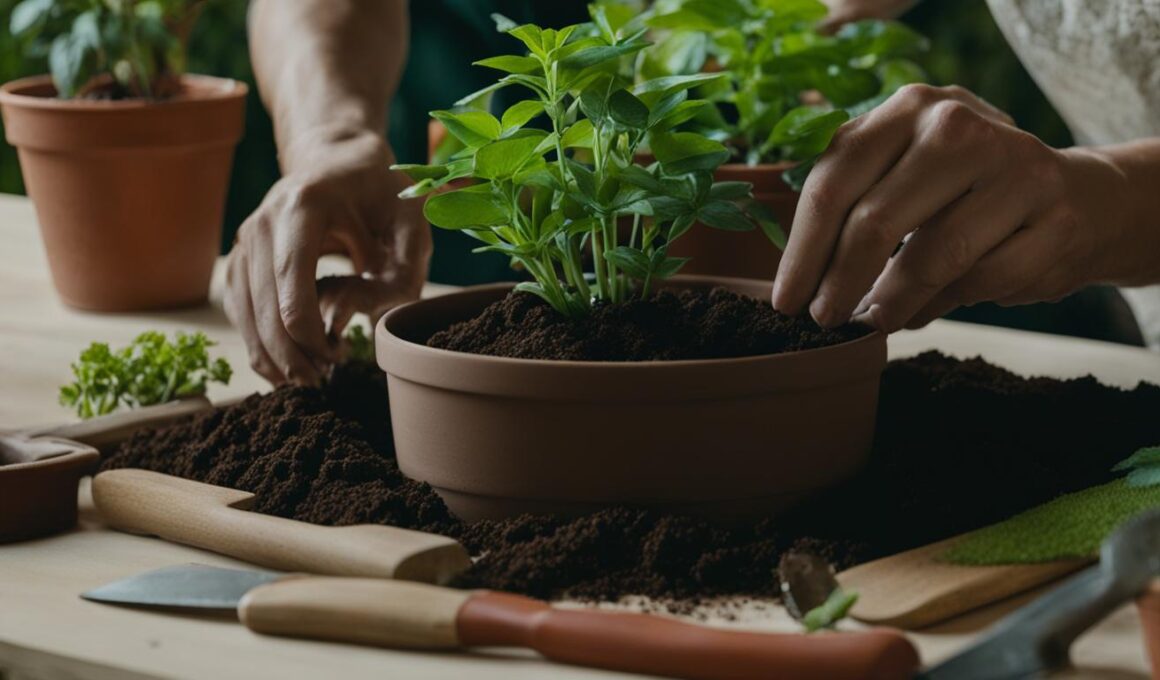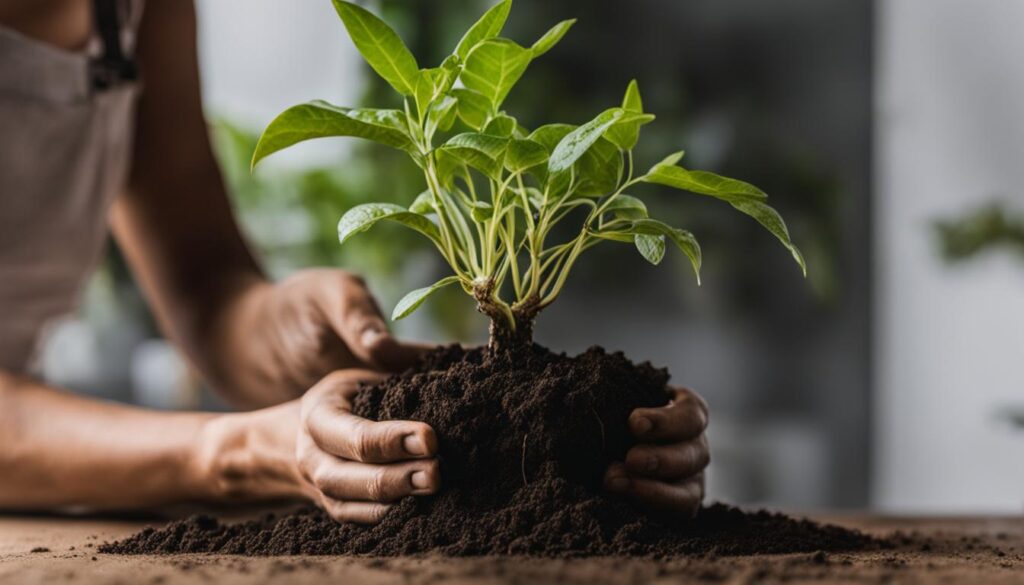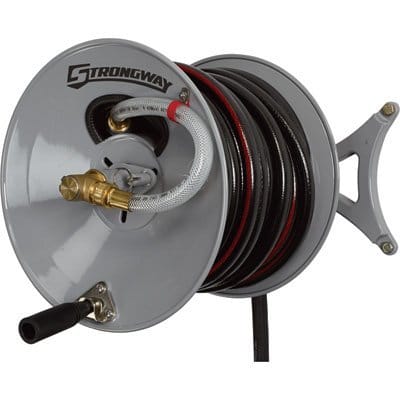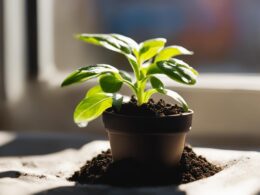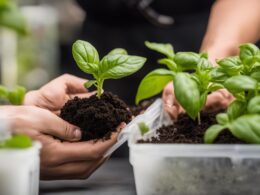When bringing home a new plant, there is often a debate about whether or not to repot it immediately. Some experts suggest leaving it in its original pot to let it acclimate to its new environment, while others believe repotting is necessary for the plant’s health.
According to one grower, it is best to allow the plant to acclimate for two weeks before considering repotting. However, there are instances when repotting is recommended, such as when the plant is root bound, overgrown, or if it is showing signs of pest infestation or improper soil conditions.
Post Summary:
- Repotting a newly bought plant is a matter of debate in the gardening community.
- Some experts recommend allowing the plant to acclimate for two weeks before repotting.
- Repotting is necessary when the plant is root bound, overgrown, or showing signs of pests or improper soil.
- Leaving the plant in its original pot minimizes stress during the transition to a new environment.
- Consider the specific needs of the plant before deciding whether to repot or not.
Reasons to Leave Plants in Their Original Pot
When bringing home a new plant, it can be tempting to immediately repot it into a larger container. However, there are several reasons why it may be beneficial to leave the plant in its original pot for a period of time.
One of the main reasons is to minimize the shock that the plant experiences during the transition to its new environment. Plants are sensitive to changes in light levels, air quality, and temperature, and repotting too soon can add additional stress. By allowing the plant to acclimate in its original pot, it has the opportunity to gradually adjust to its new surroundings, reducing the risk of leaf drop and root damage.
Additionally, leaving the plant in its original pot allows you to observe its growth and health more easily. You can monitor the plant for any signs of stress or insect infestation and take appropriate action if necessary. It also gives you the chance to assess the plant’s root system and determine if repotting is truly needed.
Leaving the plant in its original pot for a couple of weeks can help minimize stress and promote healthy growth.
Overall, leaving plants in their original pot for a period of time can help minimize shock and allow for a smoother transition to their new environment. This approach is especially beneficial for plants that are prone to stress or have delicate root systems. By providing a stable and familiar environment, you can give your new plant the best chance for healthy growth and success.
When to Consider Repotting
Knowing when to consider repotting your plant is essential for its overall health and well-being. While it’s generally recommended to allow a newly purchased plant to acclimate before repotting, there are certain signs and situations that indicate repotting is necessary.
Signs of Pest Infestation
If you notice pests on your plant or signs of damage caused by pests, it’s crucial to consider repotting as part of your pest prevention strategy. Repotting the plant into fresh soil and treating it with an insecticidal soap can help eliminate any existing pests and prevent further infestation.
Poor Root Health
If your plant is root bound or overgrown, repotting becomes necessary to provide ample space for root growth. When the roots become tightly packed and start circling the bottom of the pot, repotting into a larger container allows the plant to establish a healthier root system.
Improper Soil Conditions
Inadequate soil conditions can hinder the growth and health of your plant. If the plant is potted in soil that is not suitable for its specific needs, repotting it into a more appropriate medium is recommended. This ensures that the plant receives the necessary nutrients and moisture to thrive.
In summary, repotting should be considered when dealing with pest infestation, poor root health, or improper soil conditions. By addressing these issues through repotting, you can promote the long-term health and vitality of your plants.
Essential Equipment for Repotting a New Plant
| Equipment | Description |
|---|---|
| Mask or face covering | Protects against soil bacteria |
| Gardening gloves | Provides hand protection |
| Potting mix | Provides nutrients and drainage for the plant |
| Scissors | Helps with cutting grow pots or removing roots |
| Appropriate-sized container | Provides space for the plant’s growth without overwhelming it |
| Watering can | Used to water the plant after repotting |
| Small gardening trowel | Assists with scooping and transferring soil |
Conclusion
After buying a new plant, the decision to repot it or not depends on various factors that can impact its health. Allowing the plant to acclimate in its original pot can minimize stress during the transition period, giving it time to adjust to its new surroundings. This approach is especially beneficial if the plant is not showing any signs of distress and is in a suitable pot and soil.
However, there are situations when repotting is necessary for the plant’s well-being. If the plant is root bound or overgrown, it may require a larger pot to accommodate healthy root growth. Additionally, if the plant shows signs of pest infestation or is potted in soil that is unsuitable for its needs, repotting can help address these issues and improve the plant’s overall health.
When it comes to repotting, it is important to follow best practices to ensure success. Use the proper equipment, such as gardening gloves and a small gardening trowel, and select a new pot that is only slightly larger than the original pot. Take care when removing the plant from its original pot, gently loosen the roots, and remove any old soil. Finally, thoroughly water the plant after repotting to settle the soil and provide necessary moisture.
Should I Repot My Houseplants Using Eggshells as Fertilizer?
If you’re considering repotting your houseplants, using eggshells for houseplants can be a great natural fertilizer option. Crushed eggshells can provide essential nutrients like calcium and potassium to your plants while also helping to improve soil drainage. Give it a try in your next repotting adventure!
FAQ
Should I repot a plant after buying it?
Whether or not to repot a plant after buying it depends on various factors. It is generally recommended to allow the plant to acclimate to its new environment for a couple of weeks before considering repotting. However, there are instances when repotting is necessary.
Why should I leave plants in their original pot?
Leaving plants in their original pot helps minimize the stress they experience during the transition to a new environment. The plant needs time to adjust to factors like light levels, air quality, and temperature. Repotting too soon can cause additional stress, leading to leaf drop and root damage.
When should I consider repotting a plant?
Repotting is recommended when a plant is root bound, overgrown, or showing signs of pest infestation or improper soil conditions. It is also necessary if the plant has been overwatered and is suffering from waterlogged soil.
What are the tips for repotting houseplants?
When repotting houseplants, it is important to have the essential equipment, such as a mask or face covering, gardening gloves, potting mix, scissors, an appropriate sized container, a watering can, and a small gardening trowel. Select a new pot that is slightly larger than the original pot. The repotting process involves removing the plant from its pot, loosening the roots, replacing the potting mix, and watering the plant thoroughly.
How do I properly repot a new plant?
To properly repot a new plant, start by massaging the grow pot to loosen the plant’s roots. Tilt the plant and cut the pot if necessary for easier removal. Once the plant is free from its pot, gently loosen the roots and remove any old soil. Select a pot that is slightly larger than the grow pot and fill it with fresh potting mix. Place the plant in the new pot, ensuring it is centered, and add more soil around the sides. Finally, thoroughly water the soil to settle it and provide moisture to the plant.
What is the importance of repotting plants?
Repotting plants is important for their overall health and growth. It allows for root expansion, helps prevent pest infestation, and ensures the plant is in suitable soil conditions. By following the proper techniques for repotting and considering the plant’s specific needs, you can promote its continued health and well-being in its new home.





